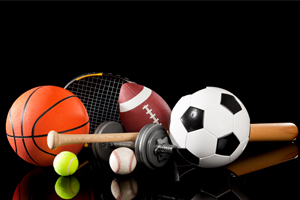 Many doctors specializing in sports medicine are reporting increasing numbers of young patients in their practice with repetitive use injuries. One sports medicine expert at Johns Hopkins Children’s Center, Dr. Amy Valasek, reports that approximately half the sports injuries she sees are due to overuse, as opposed to the more commonly known sports injuries such as sprains, fractures and concussions.
Many doctors specializing in sports medicine are reporting increasing numbers of young patients in their practice with repetitive use injuries. One sports medicine expert at Johns Hopkins Children’s Center, Dr. Amy Valasek, reports that approximately half the sports injuries she sees are due to overuse, as opposed to the more commonly known sports injuries such as sprains, fractures and concussions.
A far cry from the days of informal baseball games in the neighbor’s backyard, an estimated 30 million to 45 million children in the US are involved in organized sports that involve intensive training throughout the year. Experts believe that there is greater specialization in one sport at a younger age, and the training programs have become more demanding. In addition, children often return to practice before an injury has fully healed and are not sufficiently trained in injury prevention.
Because the bones of children and young teenagers are still growing, they are particularly susceptible to overuse injury. Thus, experts advise avoiding specializing in a single sport before the age of 14. Most of these injuries are seen in children who perform multiple seasons of one sport rather than those who vary the athletic activities they practice.
Overuse injuries of the shin and knees are most common to runners; football and baseball players usually have elbow and shoulder injuries; cheerleaders, skaters and dancers are prone to ankle injuries; and gymnasts often deal with wrist injuries due to the continuous force exerted on this part of the body.
Prevention of injury is of course the best form of treatment, and Dr. Valasek says it’s important to perform warm-ups and whole-body stretches before any training session. The American Academy of Pediatrics Council on Sports Medicine and Fitness advises that children practice no more than five days per week, taking one day off from any organized training. They also advise a break of two to three months to recover between seasons and heal any injuries they may have sustained during the training season.
If your child complains of dull aches and/or pain for more than three or four days, either during or after sports practice, and whether or not it includes a restriction in motion or if the area is tender when touched, then you should consult a doctor.
Dr. Valasek notes, “It’s important to remember that the main reason to engage children in sports is not to turn them into professional athletes, but to condition the whole body in a healthy way and instill a sense of discipline, responsibility and team work.”

